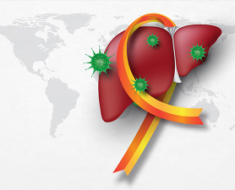The number of acute respiratory infections (ARIs) in the German population has dropped to 4.7% (Week 1). During the previous week, the figure was 7.3%. The Robert Koch Institute (RKI) has announced that the current value is like that of the pre-pandemic years. Nonetheless, there is still cause for concern: three teenagers with influenza infections died in the German state of Saxony-Anhalt as a result of secondary infections.
Consider Bacterial Infections
The RKI reported that the teenagers all had symptoms of bacterial meningitis. At the same time, influenza A viruses had been detected in all three cases. Streptococcus pyogenes was also detected in the blood cultures of two of the cases, and Staphylococcus aureus was present in one case. There were no indications of multiresistance. The RKI has now issued a warning: “The three fatalities are indicative of an increase in serious diseases caused by secondary bacterial infections following an influenza A infection.”
Schoolchildren and teenagers have been badly affected by the flu in this current influenza season. What should physicians be aware of? The recommendation states: “Secondary infections with bacterial pathogens — such as group A Streptococcus, pneumococcus, Haemophilus influenzae, and S. aureus — are particularly prevalent during the influenza and cold season. These, in addition to meningococcus, should be taken into consideration during the differential diagnosis of serious bacterial infections, such as meningitis or sepsis. A primary infection, for example with an influenza virus, is likely to increase the risk of these bacterial pathogens, causing a serious progression.”
A European Problem
It is not just Germany that is affected. A few weeks ago, the World Health Organization warned of an increase in invasive group A streptococcus (iGAS) infections in children younger than age 10 years. Since the end of 2022, reports have come from France, Ireland, the Netherlands, Sweden, and the United Kingdom, among other places.
In the same period, the WHO also received reports of multiple fatalities in connection with iGAS diseases in children younger than 10, predominantly from France, Ireland, and the United Kingdom. In France and the United Kingdom, the number of iGAS cases observed in children was several times higher than before the pandemic.
“It is likely that the increase in iGAS diseases in children is also connected with the recent increase in the spread of respiratory viruses, including seasonal influenza and respiratory syncytial virus,” the recommendation also reads. Co-infections would increase the risk.
What Is GAS?
By way of background, Group A streptococcus is the most common cause of bacterial pharyngitis in school-aged children. It usually causes mild conditions such as sore throat, headaches, fever, and a red rash (scarlet fever). In Europe, the condition usually reaches its zenith in the winter months and at the start of spring. Outbreaks in kindergartens and schools are common. GAS pharyngitis is diagnosed using a rapid antigen test or bacterial culture and treated with antibiotics. Depending on the symptoms, symptomatic treatment can also be added.
In rare cases, GAS can also cause a serious, life-threatening infection, which manifests as bacteremia, pneumonitis, or skin and bone infection (such as cellulitis, osteomyelitis, or necrotizing fasciitis). Children with viral infections such as varicella (chickenpox) or influenza have a higher risk of becoming ill with iGAS.
European Risk Assessment
GAS/iGAS infections only need to be reported in some European countries. “It is therefore currently difficult for the WHO to assess the overall extent of the spread in the European region,” wrote the WHO. “Although investigations are not yet complete, typification data indicate that the increase in cases is neither connected to a specific or new strain nor to an increase in antibiotic resistance to GAS.”
The WHO Regional Office for Europe and the European Center for Disease Prevention and Control estimate that the current risk to the general population of catching iGAS infection is low.
This article was translated from the Medscape German edition.
For more news, follow Medscape on Facebook, Twitter, Instagram, YouTube, and LinkedIn
Source: Read Full Article





